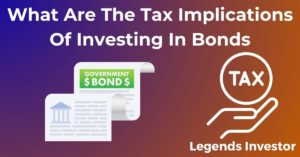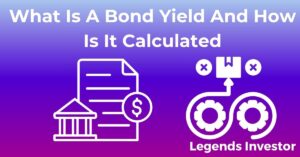Introduction to Bond Duration: A Comprehensive Guide for Investors
Bond duration is a crucial concept in fixed-income investing, helping investors understand how sensitive their bond investments are to changes in interest rates. This guide will delve into the fundamentals of bond duration, its significance in investment strategy, and how it impacts interest rate risk. Whether you’re a seasoned investor or new to bonds, grasping these concepts will enhance your investment decisions and portfolio management.
Decoding the Basics of Bonds
Explanation of What Bonds Are
Bonds are debt securities issued by governments, corporations, or other entities to raise capital. When you purchase a bond, you’re essentially lending money to the issuer in exchange for periodic interest payments and the return of the principal amount at maturity. Bonds are considered a fixed-income investment because they provide regular income through interest payments.
Types of Bonds and Their Characteristics
- Government Bonds: Issued by national governments and considered low-risk. Examples include U.S. Treasury bonds.
- Corporate Bonds: Issued by companies to fund their operations. They offer higher yields but come with higher risk compared to government bonds.
- Municipal Bonds: Issued by state or local governments, often offering tax-free interest income.
- Zero-Coupon Bonds: Sold at a discount and do not pay periodic interest but provide a lump-sum payment at maturity.
The Role of Bonds in an Investment Portfolio
Bonds play a crucial role in diversifying an investment portfolio, providing steady income, and reducing overall risk. They can act as a counterbalance to more volatile investments like stocks, offering stability and predictable returns.
Understanding Bond Duration and Its Calculation
Detailed Definition of Bond Duration
Bond duration measures the sensitivity of a bond’s price to changes in interest rates. It represents the weighted average time until a bond’s cash flows are received. The higher the duration, the more sensitive the bond’s price is to interest rate changes.
The Mathematical Formula for Calculating Bond Duration
The most common duration measure is Macaulay Duration, calculated as follows:
Duration=∑t=1n(t⋅Ct(1+y)t)P\text{Duration} = \frac{\sum_{t=1}^{n} \left(\frac{t \cdot C_t}{(1 + y)^t}\right)}{P}
Where:
- CtC_t = Cash flow at time tt
- yy = Yield to maturity
- PP = Price of the bond
- nn = Total number of periods
This formula takes into account the time value of money and the present value of all future cash flows.
Examples of Bond Duration Calculation
To illustrate bond duration calculation, consider a bond with the following features:
- Face Value: $1,000
- Coupon Rate: 5%
- Maturity: 5 years
- Yield to Maturity: 4%
Calculate the present value of each cash flow and use the formula to determine the bond’s duration. For simplicity, this example assumes annual coupon payments and a fixed yield.
The Significance of Bond Duration in Investment Strategy
How Bond Duration Affects Investment Decisions
Bond duration helps investors assess how changes in interest rates will impact the value of their bonds. A longer duration indicates greater sensitivity to interest rate changes, which can lead to higher price fluctuations. Understanding duration allows investors to make informed decisions about their bond investments, aligning them with their risk tolerance and investment goals.
The Relationship Between Bond Duration and Interest Rates
Duration and interest rates have an inverse relationship. When interest rates rise, bond prices fall, and vice versa. Bonds with longer durations experience more significant price changes than those with shorter durations. This is because the present value of future cash flows is more affected by interest rate changes over a longer time horizon.
Using Bond Duration to Balance Investment Portfolios
Investors use bond duration to manage interest rate risk and balance their portfolios. By combining bonds with different durations, investors can create a portfolio that aligns with their investment objectives and risk tolerance. For example, a mix of short-term and long-term bonds can help mitigate the impact of interest rate fluctuations.
Macaulay Duration vs. Modified Duration
Explanation of Macaulay Duration and Its Use
Macaulay Duration measures the weighted average time until a bond’s cash flows are received. It is useful for understanding the bond’s average time to maturity and helps in comparing bonds with different maturities and coupon rates. Macaulay Duration is primarily used for assessing the time horizon for a bond’s cash flows.
The Concept of Modified Duration and Why It’s Important
Modified Duration adjusts Macaulay Duration to account for changes in interest rates. It measures the percentage change in a bond’s price for a 1% change in yield. Modified Duration is more practical for assessing interest rate risk and is used to estimate the bond’s price volatility.
Modified Duration=Macaulay Duration1+ym\text{Modified Duration} = \frac{\text{Macaulay Duration}}{1 + \frac{y}{m}}
Where:
- yy = Yield to maturity
- mm = Number of compounding periods per year
Comparative Analysis of the Two Types of Duration
Macaulay Duration provides a time-based measure of bond sensitivity, while Modified Duration focuses on price changes due to interest rate movements. Both measures are valuable for different purposes: Macaulay for understanding cash flow timing and Modified for assessing price volatility.
Factors Influencing Bond Duration
Interest Rate Levels and the Inverse Relationship with Bond Duration
Interest rate levels play a crucial role in determining bond duration. As interest rates rise, bond prices fall, and duration increases. Conversely, when rates fall, bond prices rise, and duration decreases. This inverse relationship helps investors understand how bond prices will react to changes in interest rates.
The Impact of Bond Coupon Rates on Duration
Coupon rates affect bond duration because higher coupon payments shorten the bond’s duration. Bonds with higher coupons provide more cash flow earlier, reducing the weighted average time to receive payments. Lower coupon bonds, conversely, have longer durations due to the smaller cash flows received later.
How the Maturity of Bonds Affects Their Duration
Longer-maturity bonds generally have higher durations because their cash flows are received further in the future, making them more sensitive to interest rate changes. Shorter-maturity bonds have lower durations, with cash flows received sooner and less sensitivity to interest rate movements.
Bond Duration and Its Impact on Interest Rate Risks
What Is Interest Rate Risk?
Interest rate risk is the risk that changes in interest rates will negatively affect the value of a bond. When rates rise, bond prices fall, and when rates fall, bond prices rise. Duration is a key tool for assessing this risk and understanding how bond investments will perform under different interest rate scenarios.
The Role of Duration in Assessing Interest Rate Risk
Duration helps investors quantify the impact of interest rate changes on bond prices. By knowing the duration, investors can estimate how much a bond’s price will change in response to interest rate movements, allowing them to manage their exposure to interest rate risk effectively.
Strategies to Mitigate Interest Rate Risk Using Bond Duration
Investors can use several strategies to mitigate interest rate risk, including:
- Diversification: Holding bonds with varying durations to spread risk.
- Duration Matching: Aligning bond durations with investment horizons.
- Bond Laddering: Investing in bonds with staggered maturities to reduce the impact of interest rate fluctuations.
Real-World Application: Portfolio Management Using Bond Duration
Case Studies on Using Bond Duration in Portfolio Management
- Case Study 1: A portfolio manager uses bond duration to manage a fixed-income portfolio by combining short-term and long-term bonds to achieve a desired level of interest rate sensitivity.
- Case Study 2: An investor approaching retirement adjusts their bond portfolio duration to reduce exposure to interest rate risk and protect their capital.
Testimonials from Financial Experts on Bond Duration
Financial experts emphasize the importance of understanding bond duration for managing interest rate risk and optimizing fixed-income portfolios. They recommend using duration as a key tool in investment strategies to align bond investments with financial goals and market conditions.
Tools and Resources for Managing Bond Investment Duration
Several tools and resources can help investors manage bond duration, including:
- Bond Duration Calculators: Online tools to calculate the duration of individual bonds or bond funds.
- Investment Software: Programs that provide detailed bond analytics and duration metrics.
- Financial Advisors: Professionals who offer personalized advice on bond duration and portfolio management.
Conclusion and Key Takeaways
Recap of the Fundamental Concepts of Bond Duration
Bond duration measures a bond’s sensitivity to interest rate changes and helps investors understand how bond prices will react to fluctuations in interest rates. It provides valuable insights into managing interest rate risk and optimizing investment portfolios.
Re-emphasizing the Importance of Understanding Bond Duration for Investors
Understanding bond duration is crucial for making informed investment decisions and managing interest rate risk. By incorporating duration analysis into their investment strategies, investors can better align their bond portfolios with their financial goals and market conditions.
Final Thoughts and Recommendations for Further Reading
For a deeper understanding of bond duration and its applications, consider exploring resources on fixed-income investing, duration management, and interest rate risk. Consulting with financial professionals can provide personalized guidance and help you effectively manage your bond investments.



